Unit 21

Learning Aim A
Research
What is a 'shot'?
A shot is a series of frames that runs for an uninterrupted period of time. Film shots are an essential aspect of a movie where angles, transitions and cuts are used to further express emotion, ideas and movement.
What is 'editing'?
Editing is the process of selecting and preparing written, photographic, visual, audible, or cinematic material used by a person or an entity to convey a message or information.
What is 'continuity' editing?
Continuity editing is the process of editing together different but related shots to give viewers the experience of a consistent story in both time and space.
What is a 'sequence'?
In film, a sequence is a series of scenes that form a distinct narrative unit, which is usually connected either by a unity of location or a unity of time.
What is the 'role' of an editor?
An Editor is a professional who is the voice of a company, ensuring that all written materials are accurate and of high quality. They work with writers to improve their content to make sure it flows well while also educating them about best practices for writing well in general.
What is 'Non-continuity' editing?
Non-continuity editing is when shots are mismatched to disrupt the impression of time and space. This draws the audiences' attention to the process of cutting and disturbs the illusion of 'reality'. An example is the use of flash backs.
What is 'montage editing'?
Montage, in motion pictures, the editing technique of assembling separate pieces of thematically related film and putting them together into a sequence.
History
Louise le Prince
Louis Aimé Augustin Le Prince (28 August 1841 – disappeared 16 September 1890, declared dead 16 September 1897) was a French artist and the inventor of an early motion-picture camera, possibly the first person to shoot a moving picture sequence using a single lens camera and a strip of (paper) film.He has been credited as "Father of Cinematography", but his work did not influence the commercial development of cinema—owing at least in part to the great secrecy surrounding it.
A Frenchman who also worked in the United Kingdom and the United States, Le Prince's motion-picture experiments culminated in 1888 in Leeds, England. In October of that year, he filmed moving-picture sequences of family members in Roundhay Garden and his son playing the accordion, using his single-lens camera and Eastman's paper negative film. At some point in the following eighteen months he also made a film of Leeds Bridge. This work may have been slightly in advance of the inventions of contemporaneous moving-picture pioneers, such as the British inventors William Friese-Greene and Wordsworth Donisthorpe, and was years in advance of that of Auguste and Louis Lumière and William Kennedy Dickson (who did the moving image work for Thomas Edison).

Thomas Edison

Thomas Alva Edison (February 11, 1847 – October 18, 1931) was an American inventor and businessman.He developed many devices in fields such as electric power generation, mass communication, sound recording, and motion pictures. These inventions, which include the phonograph, the motion picture camera, and early versions of the electric light bulb, have had a widespread impact on the modern industrialized world. He was one of the first inventors to apply the principles of organized science and teamwork to the process of invention, working with many researchers and employees. He established the first industrial research laboratory.
Edison was raised in the American Midwest. Early in his career he worked as a telegraph operator, which inspired some of his earliest inventions.[In 1876, he established his first laboratory facility in Menlo Park, New Jersey, where many of his early inventions were developed. He later established a botanical laboratory in Fort Myers, Florida, in collaboration with businessmen Henry Ford and Harvey S. Firestone, and a laboratory in West Orange, New Jersey, that featured the world's first film studio, the Black Maria. With 1,093 US patents in his name, as well as patents in other countries, Edison is regarded as the most prolific inventor in American history.Edison married twice and fathered six children. He died in 1931 of complications of diabetes.
Lumiere Brothers
Lumière brothers US: French: Auguste Marie Louis Nicolas Lumière (19 October 1862 – 10 April 1954) and Louis Jean Lumière (5 October 1864 – 6 June 1948),were French manufacturers of photography equipment, best known for their Cinématographe motion picture system and the short films they produced between 1895 and 1905, which places them among the earliest filmmakers.
Their screening of a single film on 22 March 1895 for around 200 members of the "Society for the Development of the National Industry" in Paris was probably the first presentation of projected film. Their first commercial public screening on 28 December 1895 for around 40 paying visitors and invited relations has traditionally been regarded as the birth of cinema. Either the techniques or the business models of earlier filmmakers proved to be less viable than the breakthrough presentations of the Lumières.

Edwin S Porter

Edwin Stanton Porter (April 21, 1870 – April 30, 1941) was an American film pioneer, most famous as a producer, director, studio manager and cinematographer with the Edison Manufacturing Company and the Famous Players Film Company. Of over 250 films created by Porter, his most important include: What Happened on Twenty-third Street, New York City, (1901), (the 72-seconds long footage depicting the skirt-raising scene later used in The Seven Year Itch); Jack and the Beanstalk (1902); Life of an American Fireman (1903);The Great Train Robbery (1903); The European Rest Cure (1904); The Kleptomaniac (1905) Life of a Cowboy (1906); Rescued from an Eagle's Nest(1908); and The Prisoner of Zenda (1913).
D.W Griffith
David Wark Griffith (January 22, 1875 – July 23, 1948) was an American film director. Considered one of the most influential figures in the history of the motion picture,he pioneered many aspects of film editing[3] and expanded the art of the narrative film.
Griffith is known to modern audiences primarily for directing the film The Birth of a Nation (1915). One of the most financially successful films of all time, it made investors enormous profits, but it also attracted much controversy for its degrading portrayals of African Americans, its glorification of the Ku Klux Klan, and its racist viewpoint. The film led to riots in several major cities all over the United States, and the NAACP attempted to have the film banned. Griffith made his next film Intolerance (1916) as an answer to critics, who he felt unfairly maligned his work.
Together with Charlie Chaplin, Mary Pickford, and Douglas Fairbanks, Griffith founded the studio United Artists in 1919 with the goal of enabling actors and directors to make films on their own terms as opposed to the terms of commercial studios. Several of Griffith's later films were successful, including Broken Blossoms (1919), Way Down East (1920), and Orphans of the Storm (1921), but the high costs he incurred for production and promotion often led to commercial failure. He had made roughly 500 films by the time of his final feature, The Struggle (1931), all but three of which were completely silent.

Lev Kuleshov

Lev Vladimirovich Kuleshov (Russian: Лев Владимирович Кулешов; 13 January [O.S. 1 January] 1899 – 29 March 1970) was a Russian and Soviet filmmaker and film theorist, one of the founders of the world's first film school, the Moscow Film School.He was given the title People's Artist of the RSFSR in 1969. He was intimately involved in development of the style of film making known as Soviet montage, especially its psychological underpinning, including the use of editing and the cut to emotionally influence the audience, a principle known as the Kuleshov effect. He also developed the theory of creative geography, which is the use of the action around a cut to connect otherwise disparate settings into a cohesive narrative.
Rouben Mamoulian
He directed his first feature film in 1929, Applause, which was one of the early sound films. It was a landmark film owing to Mamoulian's innovative use of camera movement and sound, and these qualities were carried to his other films released in the 1930s. Dr. Jekyll and Mr. Hyde (1931) is regularly considered the best version of Robert Louis Stevenson's tale; Queen Christina (1933) was the last film Greta Garbo made with John Gilbert; both benefit from being made before the "Hays Code" came into full force. The musical film Love Me Tonight was released in 1932.
He directed the first three-strip Technicolor film Becky Sharp (1935), based on Thackeray's Vanity Fair, as well as the 1937 musical High, Wide, and Handsome. His next two films earned him wide admiration, The Mark of Zorro (1940) and Blood and Sand (1941), both remakes of silent films. Blood and Sand, about bullfighting, was filmed in Technicolor, and used color schemes based on the work of Spanish artists such as Diego Velázquez and El Greco. His foray into screwball comedy in 1942 was a success with Rings on Her Fingers starring Henry Fonda and Gene Tierney.
Mamoulian's last completed musical film was Metro-Goldwyn-Mayer's 1957 film version of the Cole Porter musical Silk Stockings. This was one of Porter's less successful stage musicals and was based on the 1939 Ninotchka. The film Silk Stockings starred Fred Astaire and Cyd Charisse, with Janis Paige and Peter Lorre in supporting roles.
Mamoulian's film directing career came to an end when he was fired from two consecutive films: Porgy and Bess (1959) and Cleopatra (1963). He previously had been fired as director of Laura (1944). After directing the highly successful original stage productions of Oklahoma! and Carousel, he worked on only a few other theatrical productions, such as St. Louis Woman, which introduced Pearl Bailey to Broadway audiences.

George Melies

Marie-Georges-Jean Méliès, French: 8 December 1861 – 21 January 1938) was a French illusionist, actor, and film director. He led many technical and narrative developments in the earliest days of cinema.
Méliès was well known for the use of special effects, popularizing such techniques as substitution splices, multiple exposures, time-lapse photography, dissolves, and hand-painted colour. He was also one of the first filmmakers to use storyboards.His films include A Trip to the Moon (1902) and The Impossible Voyage (1904), both involving strange, surreal journeys somewhat in the style of Jules Verne, and are considered among the most important early science fiction films, though their approach is closer to fantasy.
Alfred Hitchcock
Sir Alfred Joseph Hitchcock KBE (13 August 1899 – 29 April 1980) was an English filmmaker widely regarded as one of the most influential figures in the history of cinema.In a career spanning six decades, he directed over 50 feature films, many of which are still widely watched and studied today. Known as the "Master of Suspense", he became as well known as any of his actors thanks to his many interviews, his cameo roles in most of his films, and his hosting and producing the television anthology Alfred Hitchcock Presents (1955–65). His films garnered 46 Academy Award nominations, including six wins, although he never won the award for Best Director despite five nominations.

Steven Spielberg

Steven Allan Spielberg KBE ; born December 18, 1946 ;is an American film director, producer, and screenwriter.A major figure of the New Hollywood era and pioneer of the modern blockbuster, he is the most commercially successful director of all time. Spielberg is the recipient of various accolades, including three Academy Awards (including two Best Director wins), a Kennedy Center honor, a Cecil B. DeMille Award, and an AFI Life Achievement Award. In 2013, Time listed him as one of the 100 most influential people.
Spielberg was born in Cincinnati, Ohio, and grew up in Phoenix, Arizona.He moved to California and studied film in college. After directing several episodes for television including Night Gallery and Columbo, he directed the television film Duel (1971) which gained acclaim from critics and audiences. He made his directorial film debut with The Sugarland Express (1974), and became a household name with the 1975 summer blockbuster Jaws. He then directed box office successes Close Encounters of the Third Kind (1977), E.T. the Extra-Terrestrial (1982), and the Indiana Jones series. Spielberg explored drama in The Color Purple (1985) and Empire of the Sun (1987).
Editing Techniques
Straight cut
A straight cut is a term used when the editor switches directly from one shot to the next shot. This technique is used to change angles in a movie on our perception and memory of a scene.
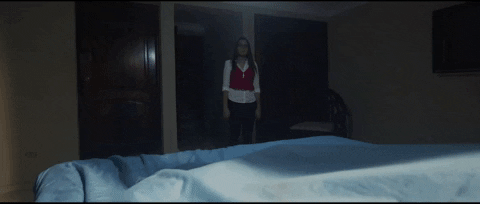
Quick cut
Quick cuts are a straight peace straight cuts which are used to help create energy in action scenes.

Long take
A long take is one take shot that continues for a particularly long time before a cut or transition. This technique is used to install suspense into a scene.
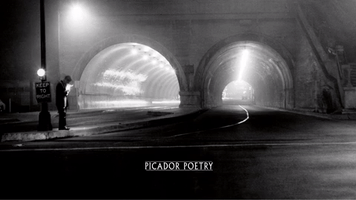
Elliptical editing
Elliptical editing is used to compress the amount of time a visual text plays out (not in real time).
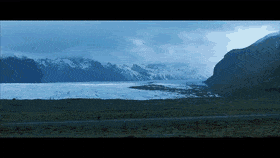
Eyeline Match
Eyeline match is a shot which cuts to an object or person that the character is looking at in the previous shot. This technique is used to help the audience feel a connection with the story.
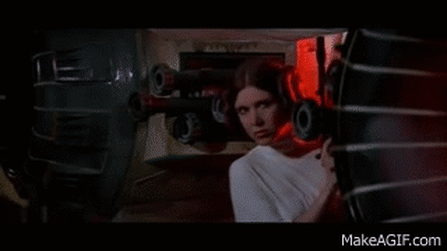
Shot/reverse shot
A shot/reverse shot is when camera alternates between subjects conversing (not breaking the 180 degrees rule), the viewer assumes that the subjects are looking at each other.
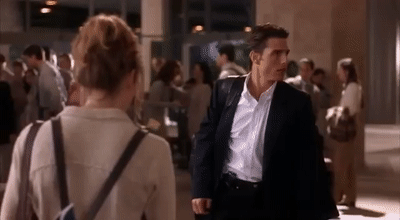
Transition
A transition is a stylised technique used to replace a straight cut from one shot to the next shot. This technique helps the audience set the mood or tone of a scene.
1) wipe is when a shot pushes the previous shot off the screen.
2) wash is the flash that appears before the transition which is normally the light that change the scene.
3) fade is when the screen fades to black or white before the next scene.
4) dissolve is when a shot dissolves into another shot.
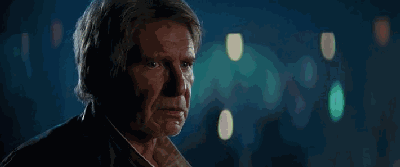
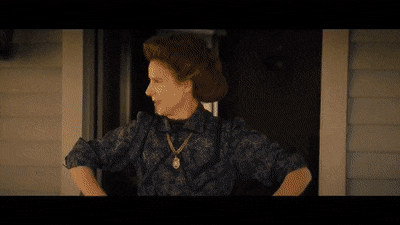
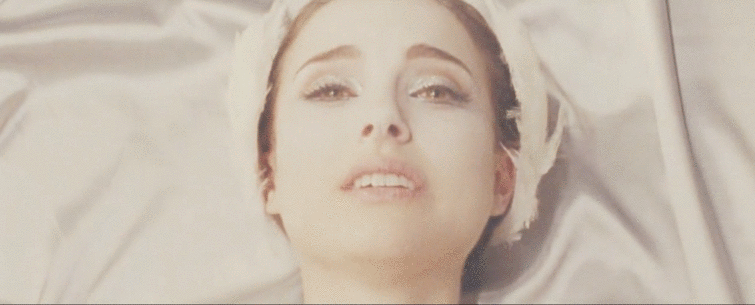
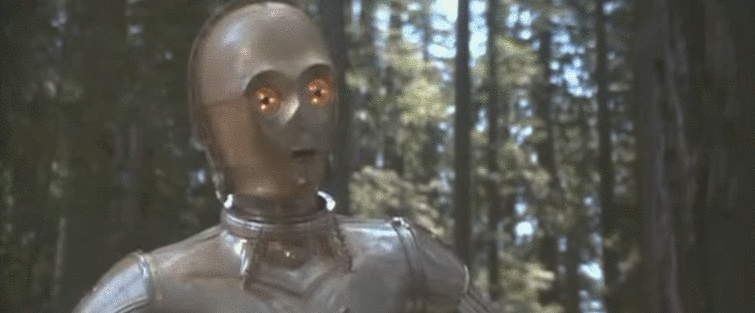
Cut way
A cut way is a shot or series of shots that cut to the location in order to help establish the location of a scene.
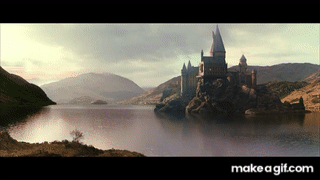
Match on action
Match on action is the cutting of a various different shots in order to display a seamless continuation of action and also it can create momentum.
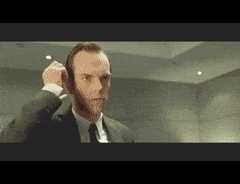
Reaction shot
A reaction shot is a shot used to show a subject's non-verbal reaction to the previous shot (not using dialogue). This technique implies some sort of emotion on the face of the actors.
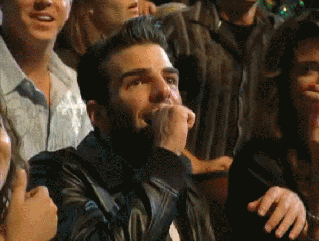
Cross cutting
Cross cutting is most often used to establish action occurring at the same time but in two different locations.
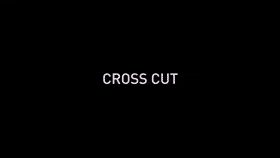
Cut-ins
Cut-ins are usually still pictures that interrupts the action of a film.

L cut
An l cut is when the audio from preceding scenes carries over the image of the following scene. This technique is used because it allows the editors to have the sound or dialogue of one scene linger into the next.

J cut
A j cut is a type of transition where the audio from the next scene starts playing before the video from that scene starts.
Establishing shot
An establishing shot is a shot taken from extreme long distance, normally used at the start of the scene because it helps establish the location of the scene.
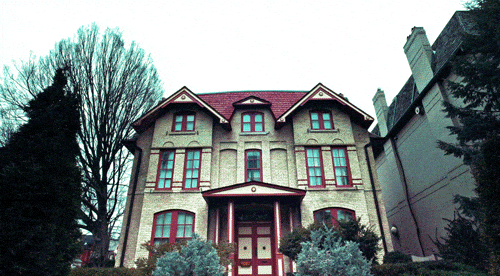
30-degree rule
30-degree rule is an editing technique that states the camera should move 30 degrees relative to the subject between successive shots of the same subject. This is used to help the audience understand the scene.

180-degree rule
180-degree rule is a technique that keeps the track of where the characters are in a scene. This technique is used to establish the spatial relationship between characters on screen.

Graphic Match
Graphic match occurs when the shapes, colours and overall movement of two shots match in composition, either within a scene or, especially, across a transition between two scenes.

Jump cut
A jump cut is a transition between scenes in a film that involves breaking a single shot with a quick cut, jumping between scenes. This creates jarring effect for the audience.
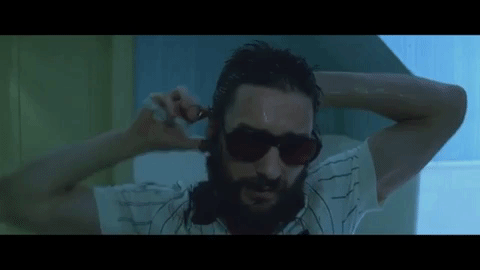
Freeze frame
A freeze frame is when the video stops while the audio lasts. It looks like a picture with a voiceover. This helps to draw attention to the scene making it more dramatic.
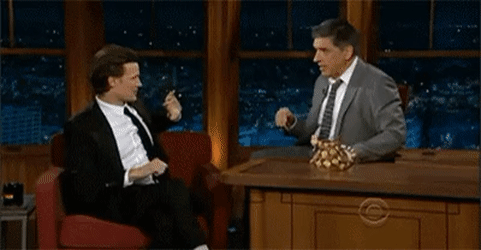
Slow motion
�
Slow motion is mostly used widely in action films for dramatic effect. This effect refers to as speed ramping and it is a process whereby the capture frame rates the camera changes every time.
Slit screen
Slit screen is the visible division of the screen, traditionally in half, but also in simultaneous images, creating the illusion that screen's frame is a seamless view of reality.
Flashback/flashforward
A flashback is a scene that shows the past, typically depicting events that are relative to the current plot. A flashforward represents a shot scene that takes the audience ahead of time within the narrative. This technique creates context and a better understanding for the audience.


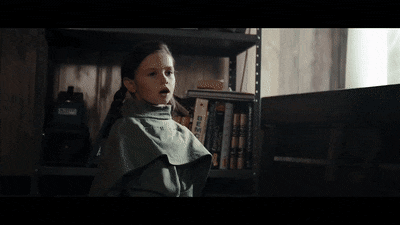
Narrative
Enigma codes
The enigma codes is a theory that suggests a text (whether that can be television ,film or a poster) portrays a mystery to draw the audience in.This allows the audience to pose questions and as such becomes intrigues in the piece.
Linera
Linear TV offers viewers access to content via subscription to cable or satellite services or through over-the-air broadcasts. The term linear refers to the way in which viewers consume the content. They can only watch programs according to a broadcaster programming schedule.
Non-linear
Non-linear editing (NLE) is an editing process that enables the editor to make changes to a video or audio project without regard to the linear timeline. In other words, you can work on whichever clip you want in any order. It doesn't matter if it lands in the beginning, middle, or end of the project.
Multi strand narrative
Multi-strand is telling a story from several main characters perspectives who all have their own small story lines within the narratives. These storylines usually collide together and overlap which the audience see themselves from their own perspective.
Serial Narrative
Serial Narrative is a story arc that runs across all episodes.
Series narrative
Each episode in a series comprises of self-contained narrative.
Flexi Narrative
Flexi Narrative ia a mixture of series and serial, closure of one story arc within an episode but with other , ongoing story arcs.This is a more complex narrative structure with layers of interweaving narratives. This technique challenges the audience and keeps them watching. There will be twists and turns and surprises, and characters will become more complex.
Episodic drama
The action unfolds as a series of episodes all connected but perhaps out of chronological sequence. Most scenes are of equal significance; that is to say, no one is necessarily more climatic than another though some episodes may have their own mini-climax.It involves characters and locations, covers a lengthy period of time and involved sub plots in addiction to main story.
Unrestricted Narrative
Unrestricted narrative is when the viewer is privy to certain knowledge or info that is denied to characters within the text.
Restricted Narrative
Restricted narrative is the amount of info that audience are given is limited as the viewers only know as such as the viewers only know as mush as the characters.
Purposes
Manipulating the scene of time
The best editing techniques that could manipulate the sense of time better would be flash forwards , elliptical edits, freeze-frames ,low motion and flashbacks. This is because these techniques can control the time of each scenes. By controlling the time and the duration of the scenes the audience would think that the time has passed.
Controling the perception of the space to create a logical and believable space between characters that do not share the same shot/angle.
The editing techniques that can control the space in between the characters that do not share the same angle are 180-degree rule, 30-degree rule and shot/reverse shot. Through this editing techniques the characters are close to each there but they are not both embraced in the same shot/angle. This helps the audience to not get confused over the positions of the characters on the stage.
Controlling the rhythm and pace of to control the flow of the production
The editing techniques that can control the rhythm and pace of to control the flow of the production are straight cuts and quick cuts. This is because the shots will last the sam, which creates a sense of rhythm and pace for the audience.
Creating a narrative through motivation
The editing techniques that can create narrative through motivation are match on action and eyeliner match. This is because the character is looking at the character/subject that was in the previous shot.
Creating a sense of drama through the withholding of information
the editing techniques that have the ability to introduce the sense of drama in the scenes are slow motion and reaction shot. This is because this allows the characters on the scene create an emotion scenario in the previous shot. This creates a huge impact on the audience by activating their emotional side after creating a connection with the characters through out the film.
Embracing continuity between different shots/angles
In order to embrace continuity between different shots and angles , quick cuts, match on action and jump cuts are the perfect editing techniques that can be used this is because it can manipulate the amount of time an action goes on. For example an action seems to be continuous when different shot that are related to the same action are used.
Engaging the viewer through suspense and causing an audience reaction
To engage the viewer through suspense a tensional scene has to play on. The editing technique that can have a massive tensional impact on the audience could be reaction shot. The reaction shot shows the reaction of the character of the previous shot, this makes the audience feel sympathy for the character in cause which creates a sensitive and emotional mood.
Juxtaposing elements within editing and creating a sense of personal connection and empathy with characters.
The slit screen and 180-degree rule creates a sense of personal connection between characters.These two editing techniques creates a connection between characters by using different shot and angles to embrace separate individuals that have a conversation or are related to each other.
Core assessment
As a film trailer, the dominant editing would be non-continuity editing. This is because it creates tension and makes the audience slightly confused about the content of the film. Non- continuity editing is when the time is disrupted in the sequence, this engages chaos and increases the interest of the audience in the film as the editing teases the audience.
As the trailer starts, a dissolve transition takes place at 0:04 which goes straight into the action, this creates a huge impact on the audience since they don't know if the shot happens at the start of the movie, middle or end. Going straight into the action increases the curiosity of the audience which creates a sense of confusion and mystery. This gives impression of continuity as something might potentially happened before the shot. This suggests the variety of different times and period of time. The sound even interests the tension and curiosity more for since the sound technique is no noise/ silent. The NVC of the character shows the fear of the character and makes the audience think that she is in a fantasy/dream as she is in a bed. The dissolve shot shows that she might enter a different world such as the non-realistic world of dreaming. Later on, a combination between flashback and quick cuts takes place at 0:08 in order to make the audience aware of her possible childhood trauma. This helps the audience make assumptions of her past. The quick cuts interact and connects to the previous shot where, the subject was sleeping with connotes dreaming and fantasy. The quick cuts contain shots of fire which can symbolise destruction, pain, history and also might be something that is chasing her. The quick cuts give the impression of continuity of pain that the subject might have been experienced throughout her life. The audience would think that the fire instigates her fast and resent. The sound used for this editing technique is foley sfx which makes the fire sound more realistic in order to increase the tension and fear of the audience, this makes it more thrilling. After a straight cut goes back into a session of jump cuts at 0:12, which expose her fears and the possible traumatic experiences that she went through as a young child. The session of jump cuts implies chaos, creates a strange energy and also establishes more information about the events in the character's life. The use of the child connotes purity and joy, but the use of child placed in the fire (which connotes death) could suggest that the child was put in danger. The straight cut before the jump cuts connects with the dream that she possibly had at the start which then the audience might think that the child is the subject herself but as a young and innocent child. Due to this traumatic experience the young child was traumatised and terrified from young that means that the character could still have sequels. The body language of the child is linked to the editing technique since, the body language of the child reinforces fear, chaos and agitation and the editing technique makes the scene itself more agitating in order for the audience to create an emotional connection with the character. The sound technique used is score which directly controls the mood of the audience through its perturbate peace.This editing technique is effective because it gives details about the possible childhood trauma which allows the audience to make assumptions and also to feel sympathy towards the character. the empathy that the audience has toward the character adds up to the emotional connection between audience and character. Afterwards, an elliptical editing at 0:19 which makes the duration of the events on screen shorter than its normal duration in the film creates a connection between the character's story and the audience by showing her daily activity and the job that leads to the climax of the horror movie. This relationship is built in order for the audience to understand the story better and what caused the story to be as interesting as it is. The elliptical could be also used to make the movie itself more surprising since, the shots in the film trailer could be from the start muddle or end. This makes the line of the story more absorbing and compelling for the audience. The sound used also relates to the editing technique as it is emotional and spiritual which relates to the elliptical editing by making the experience more enjoyable. Later on, at 0:38, a shot reverse shot is introduced in order to show that the serum used on the dog had the effects wanted and that is to bring people/ animals back to life. The NVC of the characters show the juxtaposition between the shock and the success of the product in cause (serum). The sound used (score) gives impression of tension which makes the audience think that something might be wrong with the process of saving lives. The audience might think that after making this discovery of finding a serum that brings people back to life, they would not stop which can then cause serious problems.For this editing technique I think it could've been replaced with a reaction shot in order to see the reaction of the doctors/characters when their plan succeed. This might make the audience think that everything is going well and when the turning point would come up it would've been more shocking and surprising for the audience. Laterally, at 0:43 the 180-degree rule is used in order to show the dialogues between the protagonist and one other person. The 180-degree rule is a key element which puts together sequences which makes sense for the audience. In this case the over the shoulder shot would be similar to the 180-degree rule since it allows the audience to stay focused on the person that speaks at a time and also not get confused over the two characters speaking. In this shot, the NVC of the main character suggests that over the course of the story something bad would happen (a starting point) which will then lead to the climax/dramatic part of the story. The other person speaking to the main character seems to be careless and nonchalant which would then increase the conflict and also the interest of the audience. The next editing technique used is a graphic match, at 0:53 which shows the state of the dog's development after the use of the serum. There are some questionable things about the changes which involves the use of radiography of the dog's head. This makes the audience think that is a serious problem due to the use of the professional equipment. Graphic match technique makes the dog, seem to be as an experiment and could potentially makes the audience feel sympathy towards the dog. The use of this technique supports and encourages the audience to watch the whole movie since, the movie contains qualitative shots and content. At 1:09 the Jumpcut technique is used to show the effect of the serum used on a real person. The jumpcut itself gives effect of jarring effect which also goes along with the scary and unpleasant appearances of the character's NVC. The NVC of the character might create a scary and terrifying mood for the audience. The harshly unpleasant effect creates a conflict between audience's curiosity of what happens next but also the fear of what could happen. The voiceover used for this editing technique matches perfectly with the content of the editing technique for the particular reason of increasing the fear and tension of the scene. The body language of the character in this shot is quite unusual and atypical for a person that just has been brought to life, this might possibly have the audience questioning if everything is going well, since the jump cuts creates an irritated mood. And lastly, at 1:44 a combination between reaction shot and quick cuts is used to show the reaction of the other character when the main character starts showing side effects. The reaction shot shows the panic and hysteria that the other characters had when the main character started to create and cause problems due to the medical intercourse. The quick cuts could connote the number of catastrophes that the main character did after the use of serum. The facial expressions of the characters show fear, anxiety and perturbation due to the actions of the protagonist. The sound used increases the bizarreries mood of the end the trailer which makes the audience slightly confused and curious in regards to what is happening at the end.instead of this editing techniques I would've used simple straight cuts in order to make it more clear for the audience. This might increase the adrenaline of the audience.
The most used editing system for TV shows promo is non-continuity editing. This is because it has a mixture of different shots from all along the tv show which allows the audience to see small sequences of the tv show. This is practical because it increases the interest of the audience in the tv show and also teases them.
This tv promo is mostly using elliptical editing as the tv promo is a whole manipulation of time. The tv promo starts from a black fade to a long take (0:01). Using a long take makes the audience focus on only one thing for a particularly long time. The long take contains a crashed car which suggests that something already happened. This manipulates audience's mind because when going straight into the action it gives an impression of chaos, confusion and adrenaline. Putting the voice over sound technique makes the first scene more dramatic since it has an emotional impact on the audience after seeing the car crashed. The first editing technique is complimentary as it makes the audience slightly confused and also curious about could've potentially happened before. Later on, at 0:17 a manipulation of time takes place since a reverse action is being used. This is used to allow the audience to make assumptions about that something has happened before and the time is reversed in order to find out what caused this car crash and build drama across the film.The foley sfx can be linked to the editing technique since it is linked to the car crash.This influences the tension and the dramatic effect thatches sound technique has on the Audience.This editing technique is effective because it builds tension and also curiosity after every new thing that adds to therapy of finding out themistery behind the car crash.The manipulation of time makes it creepier for a film since it seams to be as supernatural and unusual. At 0:23 an eyeline match is used to to bring up question marks about the character and the way she could be linked to the car crash. The substance that she puts in the cup makes the audience think that she is about to consume because of the body language that shows ambition. The audience start to make assumptions about the possible thing that caused the car crash and this light be the use of the substance. Should also increases mystery and curiosity because non-diegetic sound is being used which is only heard by the audience. This means that the scene is silent and has a little nice which adds to the influence of the mood. This editing technique is a right one to use since is allows the audience to clearly see the action of the character and the importance that this scene might be for the whole movie. A match on action is added at 0:32 that contains two people handing out a pack of unknown content. This match on action contains of two different angles which shows different perspectives of the action. This might be used because it is an important part of the movie and for the particular reason of making it seem important the use of two angles is being introduced. The score sound that is used for this editing techniques makes the audience think that the scene increases tension and it has an important impact on the movie as a whole. this editing technique I think is effective because it allows the audience to see different perspectives and angles of this action which gives a hint of importance and a starting point in the movie. After this editing technique a session of quick cuts and montage (0:34) is utilised to give shot scans of the content of the movie that might be more important because it gives more information about the mystery and the characters in the movie.this editing technique is a good choice because it influences the audience to think that this small parts from the movie are the most important parts since it adds to the discovery of the mysterious content. This editing technique could've been improved if some dialogue was added to give some hints about the content of the scenes.
As an advert for promoting fashion and beauty there's not a fixed editing system such as non-continuity editing or continuity editing. In this case the non-continuity editing is used to draw the audience's attention to the process of cutting and disturbs the illusion of 'reality'. As the advert starts at 0:07, quick cuts are used to create meaning for the audience. The same person with the same clothes is being shown through the quick cuts, one shot from the back, one from the front and another one from the front but closer. This is efficient because the audience can see in more detail what fashion and beauty looks. Through the NVC of the model the audience can interpret that being fashionist involves a good attitude and also a lot of confidence. These quick cuts can also be used to show more details about the outfit and influence the audience to dress similarly. This editing technique is effective because the audience can focus on the outfit of the model and also take advice on how to dress better. To make it more effective than it is I would've used slow motion at the same time to point at the smallest details and features about the model and the outfit. Later on, at 0:13 the split screen editing technique of the same person influences the audience to look at the model, admire and see what she is promoting multiple times since the split screen. splits in 3. This has a huge impact on the audience because it points at the costume that the character was wearing, and it creates a clear image of what they are trying to promote. This editing technique is not as successful and effectual since it is very short, and the audience might not have enough time to pay attention to some important details. The next editing technique that is followed by is match on action at 0:16. This editing technique is practiced showing the audience that beauty and fashion is suitable for any kind of activity and it gives confidence to try new things that might potentially make people happier. the use of two different angles showing the same action might show that beauty and fashion can change your life towards a more secure and assured life. This editing technique is constructed because it permits the audience to see that beauty and fashion can always make you feel better as a person, and it doesn't matter the activity that you are doing. At a later time (0:25), elliptical editing is used to manipulate time in order to give the audience the impression of continuity which connotes the practice of the continuous beaty and fashion that Vogue is promoting. This editing technique is effective because the audience can see the confidence that is shown through the NVC at different time which gives the impression of continuous confidence. Another remarkable editing technique would be eyeline match (0:46). It uses two different angles two show the joy of the character when is connecting to the nature. The use of this technique is possibly added to show how beauty can affect our mood and how it can connect people with the beautiful nature since the setting of the shot is in the middle of some flowers. This technique might also be used to influence people to appreciate the things around us more and be more thankful. This technique is efficient because it allows the audience to see the joy through her NVC and also the connection between her beauty and nature's beauty. Lastly, split screen is used (1:03) again to show what Vogue is really promoting which is the beauty and confidence of the models. This split screen has a subconscious impact on the audience because it controls on what the audience should focus since the split screen contains of 3 different shots but same editing technique. In this case the audience is guided to be focused on the beauty of the model which is linked to the message behind the advert. This editing technique is successful because it makes the audience focus on the main theme of the advert which is beauty and fashion.
Learning Aim B
Continuity Video
Continuity Sequence
Someone is getting ready to leave the house.
Shot list
Storyboard



Final Product
Evaluation
For this continuity sequence, I’ve created my own continuity video in which i’m showing how a person is getting ready to leave the house without breaking the continuity in between the actions and also the angles/shots.The editing techniques that would mostly help me to keep the continuity would be:seamless continuation,cutaways+cut-ins, match on action, shot reverse shot, eyeline match and cross-cutting.The 180-degree rule and 30-degree rule are also helpful to not break continuity in case of dialogue between the subjects.Due to the lack of experience I was not able to embrace the diversity of the different editing techniques that would’ve helped me to not break the continuity.As the video starts I included some different shots related to the same action which creates the sensation of a seamless continuation of action. This helps the audience to understand more about the action and also about the character as the character is shown in multiple shots without breaking the continuity. Later on we can see a match on action as the character is walking towards the wardrobe after she puts the makeup back. This editing technique helps the audience see the actions of the character from different perspectives which could make it more clear of what they are doing. The drifting techniques list is then followed by an eyeline match when she was taking the shoes from the wardrobe. This is effective because it prevents the breaking of the continuity between two shots which makes it more realistic and unnoticeable for the audience. Lastly, I included the shot reverse shot when the character was putting the shoes on which shows the character and the shoes in multiple different shots.This creates the effect of the continuity between the two objects. Overall, I will improve more on the diversity of the shots which helps me to embrace as many editing techniques as possible.
Non-continuity experiment
Non-continuity sequence
Promoting a product.
shot list
Storyboard



Script
Non-continuity Sequence (video)
Evaluation
For the non-continuity sequence I’ve created my own non-continuity video.The scenario that I picked is a promotional advert for a product, which in my case it’s the black Burberry perfume.The possible choices of the editing techniques for the non-continuity sequence were:Montaje editing,jump cuts,juxtaposition,freeze frames,slow motion,split screen, flashback,flash forward, transactions and titles.Due to the scenario that I picked some editing techniques such as:freeze frames,jump cuts and split screen I couldn’t include for the fact that they were not suitable for the content that I created. Freeze frames, jump cuts and split screen could've been used for somebody that had a dream and an introduction for a reality TV show. On the other hand the editing techniques that I used were: flashbacks, flash forward,slow motion,montage editing and transitions. Overall,I did well considering the fact that I have never edited a non-continuity content.But I also have to improve on my technical skills.
Flash forward
At the start of the video between 0:01-0:04 I used a flash forward as a non-continuity editing technique that shows the confidence of the subject when leaving the setting after finishing promoting a product.In this shot I also embraced the title of the brand as an opening for the advert.This was effective because it helps the audience to have a clear view of the brand that the product belongs to. Using a flash forward was potent because the subject is walking away with the satisfaction and confidence that the use of the product (perfume) gave.This editing technique is practical because it influences the audience to purchase the product through the satisfaction that the subject shows when walking away after using the product.
Flashback
Later on, at 0:08 and 0:13 I added some flashbacks as a non-continuity editing technique. I used the flashbacks that contain a close up of the product in order to display some more details of the design. Before and in between the flashbacks I included the subject that was talking about the product and when she was using it and this made it seem like the subject was in the present and the close ups of the product were in the past (flashbacks). This was successful due to the fact that the combination between the close ups of the product and the shots where the subject was using the product and also talking about allowed the audience to imagine how qualitative the perfume is and also the good looking design of the bottle.The influence that the flashbacks had on the audience is a massive one since the product is being described and shown in details. This made the audience more interested in the product.
Slow motion
The next non-continuity editing technique that I have included was at the start (0:01),middle (0:18) and end (0:32) which was slow motion. At the start of the video I used slow motion to show how much satisfaction and confidence gives to the model/subject that used it. This is effective because people would be influenced by the confidence that the product gives the subject and they may want to purchase it as well. At the middle and end of the video I used slow motion to show the product in more detail and observe the beneficial things about it. Slow motion could connote fantasy due to the fact that it is not realistic which gives the impression that the use of the product is positive and magical because fantasy is usually associated with magic and positivity.
Transparent Overlay
After the flashbacks a transparent overlay (0:15) was used in order to show the beauty of subject but also the perfume itself, this is similar to the non-continuity editing technique split screen because it allows us to see two different shots in only want frame but at the same time different because the editing technique transparent overlay is much smoother than the split screen. Transparent overlay is also a non-continuity editing technique that is often used in adverts in order to create a positive image of the product by associating it with a good looking model/subject.This was effective because it gave the impression that the product is as good and it smells as beautiful as the model/subject.
Transitions
In between most shots I added many transitions (cross dissolve) so that it makes it more visually smoother for the audience.This was important because it helps to build the mood of the video and also helps to keep a balanced track of the video.
Titles
Lastly, the titles at the start and the logo at the end helped the audience to have a clear view of what is being promoted and presented in the video.
Improvements
One of the main things that I need to improve on is a smoother montage to give the impression that everything is happening in real time so it can be catchy for audience’s visual satisfaction.
Learning Aim C
Horror Trailer
Narrative breakdown
shot list
Video log sheet
Script
Storyboards







